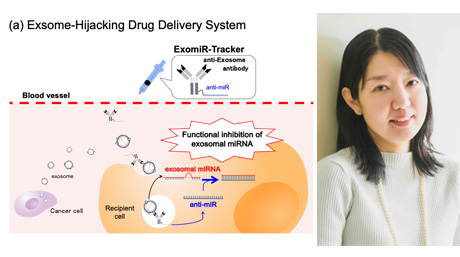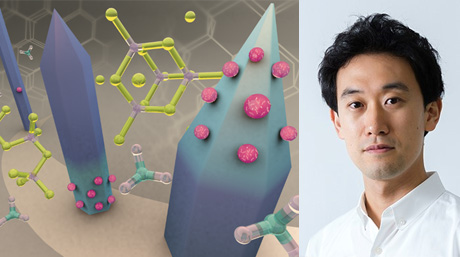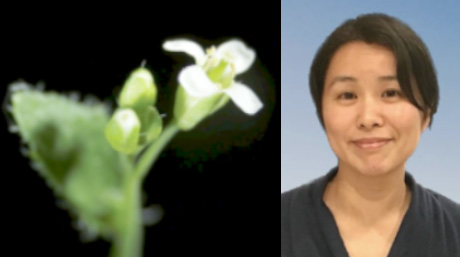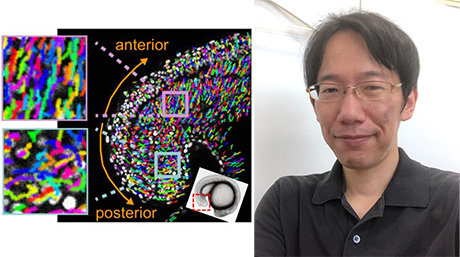Life Science and Technology News
【Labs spotlight】 Yamaguchi Laboratory
Toward a thorough understanding of the molecular machinery of life and its application
The Department has a variety of laboratories for Life Science and Technology, in which cutting-edge innovative research is being undertaken not only in basic science and engineering but also in the areas of medicine, pharmacy, agriculture, and multidisciplinary sciences.
This "Spotlight" series features a laboratory from the Department and introduces you to the laboratory's research projects and outcomes. This time we focus on Yamaguchi Laboratory.
※The room number was updated on June 7, 2023.
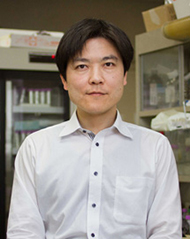
Areas of Supervision
Primary/Life Science and Technology
Professor Yuki Yamaguchi![]()
| Degree | PhD 1999, Tokyo Institute of Technology |
|---|---|
| Areas of Research | Biochemistry, Chemical Biology, Gene Expression |
| Keywords | Chromatin, Drug Development, Epigenetics, Mechanisms of Action of Drugs, Mechanisms of Transcriptional Regulation, RNA Metabolism |
| Website | Yamaguchi Lab |
Research interests : machinery of life and its application
Toward a thorough understanding of the molecular machinery of life and its application We are promoting both basic and applied research, mainly focusing on the following projects:
1. Control mechanisms of genome expression
My laboratory seeks to fully understand the process of epigenetic regulation, transcription initiation, elongation, and termination, and RNA processing, which are all necessary to make functional RNAs from the genomes. Whereas cells composing our body have the same set of genes, they exert diverse functions. This is made possible by the elaborate cellular machinery that controls spatiotemporal expression of the genomes. We have identified and characterized a set of protein factors involved in the process.
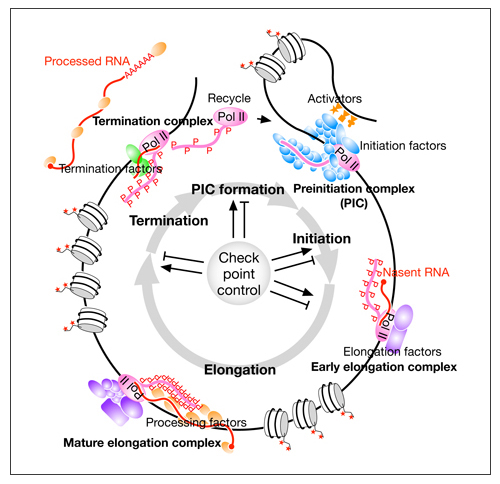
2. Chemical biology using small-molecule compounds
Small-molecule compounds are useful tools when studying complex biological systems. Understanding how a certain compound affects biological systems leads to the elucidation of unknown biological networks in which its target protein is involved. Moreover, these findings could also be applied to drug discovery. Chemical biology is an interdisciplinary subject investigating these issues, and we are conducting research, in part, through the identification of drug targets using proprietary affinity nanoparticles.
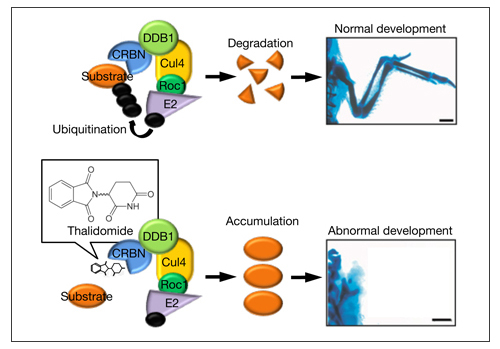
Research findings
Selected publications
- Control Mechanisms of Genome Expression
-
- 1.Cao, Q.-F., Yamamoto, J., Isobe, T., Tateno, S., Murase, Y., Chen, Y., Handa, H., and Yamaguchi, Y. (2015) Characterization of the human transcription elongation factor Rtf1: evidence for non-overlapping functions of Rtf1 and the Paf1 complex. Mol. Cell. Biol. 35, 3459-3470.
- 2.Yamamoto, J., Hagiwara, Y., Chiba, K., Isobe, T., Narita, T., Handa, H., and Yamaguchi, Y. (2014) DSIF and NELF interact with Integrator to specify the correct post-transcriptional fate of snRNA genes. Nat. Commun. 5, 4263.
- 3.Chiba, K., Yamamoto, J., Yamaguchi, Y., and Handa, H. (2010) Promoter-proximal pausing and its release: molecular mechanisms and physiological functions. Exp. Cell Res. 316, 2723-2730. (review)
- 4.Chen, Y., Yamaguchi, Y., Tsugeno, Y., Yamamoto, J., Yamada, T., Nakamura, M., Hisatake, K., and Handa, H. (2009) DSIF, the Paf1 complex, and Tat-SF1 have non-redundant, cooperative roles in RNA polymerase II elongation. Genes Dev. 23, 2765-2777.
- 5.Narita, T., Yung, T.M.C., Yamamoto, J., Tsuboi, Y., Tanabe, H., Tanaka, K., Yamaguchi, Y., and Handa, H. (2007) NELF interacts with CBC and participates in 3'-end processing of replication-dependent histone mRNAs. Mol. Cell 26, 349-365.
- 6.Yamada, T., Yamaguchi, Y., Inukai, N., Okamoto, S., Mura, T., and Handa, H. (2006) P-TEFb-mediated phosphorylation of the hSpt5 C-terminal repeats is critical for processive transcription elongation. Mol. Cell 21, 227-237.
- 7.Aiyar, S.E., Sun, J.-L., Blair, A.L., Moskaluk, C.A., Lv, Y., Ye, Q.-N., Yamaguchi, Y., Mukherjee, A., Ren, D.-M., Handa, H., and Li, R. (2004) Attenuation of estrogen receptor alpha-mediated transcription through estrogen-stimulated recruitment of a negative elongation factor. Genes Dev. 18, 2134-2146.
- 8.Wu, C.-H., Yamaguchi, Y., Benjamin, L.R., Horvat-Gordon, M., Washinski, J., Enerly, E., Larsson, J., Lambertsson, A., Handa, H., and Gilmour, D.S. (2003) NELF and DSIF cause promoter proximal pausing on the hsp70 promoter in Drosophila. Genes Dev. 17, 1402-1414.
- 9.Narita, T., Yamaguchi, Y., Yano, K., Sugimoto, S., Chanarat, S., Wada, T., Kim, D., Hasegawa, J., Omori, M., Inukai, N., Endoh, M., Yamada, T., and Handa, H. (2003) Human transcription elongation factor NELF: Identification of novel subunits and reconstitution of the functionally active complex. Mol. Cell. Biol. 23, 1863-1873.
- 10.Yamaguchi, Y., Filipovska, J., Yano, K., Furuya, A., Inukai, N., Narita, T., Wada, T., Sugimoto, S., Konarska, M.M., and Handa, H. (2001) Stimulation of RNA polymerase II elongation by hepatitis delta antigen. Science 293, 124-127.
- 11.Guo, S., Yamaguchi, Y., Schilbach, S., Wada, T., Lee, J., Goddard, A., French, D., Handa, H., and Rosenthal, A. (2000) A regulator of transcriptional elongation controls vertebrate neuronal development. Nature 408, 366-369.
- 12.Yamaguchi, Y., Takagi, T., Wada, T., Yano, K., Furuya, A., Sugimoto, S., Hasegawa, J., and Handa, H. (1999) NELF, a multisubunit complex containing RD, cooperates with DSIF to repress RNA polymerase II elongation. Cell 97, 41-51.
- 13.Wada, T., Takagi, T., Yamaguchi, Y., Ferdous, A., Imai, T., Hirose, S., Sugimoto, S., Yano, K., Hartzog, G.A., Winston, F., Buratowski, S., and Handa, H. (1998) DSIF, a novel transcription elongation factor that regulates RNA polymerase II processivity, is composed of human Spt4 and Spt5 homologs. Genes Dev. 12, 343-356.
- Chemical Biology
-
- 1.Kabe, Y., Nakane, T., Koike, I., Yamamoto, T., Sugiura, Y., Harada, E., Sugase, K., Shimamura, T., Ohmura, M., Muraoka, K., Yamamoto, A., Uchida, T., Iwata, S., Yamaguchi, Y., Krayukhina, E., Noda, M., Handa, H., Ishimori, K., Uchiyama, S., Kobayashi, T., and Suematsu, M. (2016) Haem-dependent dimerization of PGRMC1/sigma-2 receptor facilitates cancer proliferation and chemoresistance. Nat. Commun. 7, 11030.
- 2.Sakamoto, S., Omagari, K., Kita, Y., Mochizuki, Y., Naito, Y., Kawata, S., Matsuda, S., Itano, O., Jinno, H., Takeuchi, H., Yamaguchi, Y., Kitagawa, Y., and Handa, H. (2014) Magnetically-promoted rapid immunoreactions using functionalized fluorescent magnetic beads. Clin. Chem. 60, 610-620. (review)
- 3.Gupta, V., Liu, S., Ando, H., Ishii, R., Tateno, S., Kaneko, Y., Yugami, M., Sakamoto, S., Yamaguchi, Y., Nureki, O., and Handa, H. (2013) Salicylic acid induces mitochondrial injury by inhibiting ferrochelatase heme biosynthesis activity. Mol. Pharmacol. 84, 824-833.
- 4.Karasawa, S., Azuma, M., Kasama, T., Sakamoto, S., Kabe, Y., Imai, T., Yamaguchi, Y., Miyazawa, K., and Handa, H. (2012) Vitamin K2 covalently binds to Bak and induces Bak-mediated apoptosis. Mol. Pharmacol. 83, 613-620.
- 5.Ito, T., Ando, H., Suzuki, T., Ogura, T., Hotta, K., Imamura, Y., Yamaguchi, Y., and Handa, H. (2010) Identification of a primary target of thalidomide teratogenicity. Science 327, 1345-1350.
- 6.Sakamoto, S., Kabe, Y., Hatakeyama, M., Yamaguchi, Y., and Handa. H. (2009) Development and application of high-performance affinity beads: toward chemical biology and drug discovery. Chem. Rec. 9, 66-85. (review)
- Research Laboratories and Subjects
- Mechanism controlling the length of RNA made during transcription revealed: New findings could help treatments for cancer | Tokyo Tech News
Contact
Professor Yuki Yamaguchi
Room 417, B1 building, Suzukakedai campus
E-mail : yyamaguc@bio.titech.ac.jp
*Find more about the lab and the latest activities at the lab site![]() .
.
*May 1, 2025:Some of the content has been updated with the latest information.

